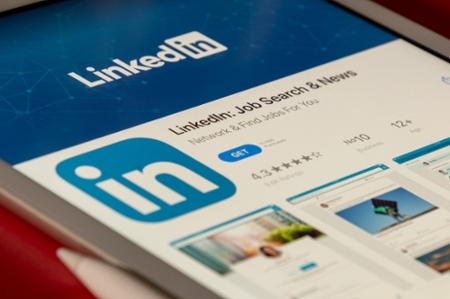How to Build a Strong LinkedIn Profile: MGA Staff Q&A with Dr. Mary Roberts
Author: Alexandria Brooks
Posted: Monday, May 6, 2024 12:00 AM
Categories:
Faculty/Staff | Pressroom
Macon, GA

In today's digital age, LinkedIn has become more than just a platform for networking online; it's a powerful tool for personal branding and career advancement. Whether you're an industry veteran or a new graduate just starting your career, optimizing your LinkedIn profile is essential for making a strong impression in the professional world.
Dr. Mary Roberts, executive director of Middle Georgia State University’s Center for Career & Leadership Development, gives expert tips and strategies for building the perfect LinkedIn profile, enhancing your online presence, and networking virtually.
What information should be included when creating a LinkedIn profile?
When creating your profile, think about your immediate career or business goal and let your information and branding reflect that goal. You should have a professional headshot that is appropriate for your industry and professional details from your work and education that highlight your skills and relevant experiences. You can even include academic projects and volunteer work to highlight your participation in your field or to expand your connections. Similar to your resume and how recruiters use applicant tracking systems, you will want to include keywords that may show up in courses and academic projects so that recruiters using LinkedIn can find you.
As you expand your profile, you can obtain endorsements and recommendations from others who have worked with you. Depending on your field, you may also upload examples of your work or write articles related to your area of expertise. You may find that aspect of LinkedIn helpful if you are using LinkedIn to gain exposure for your business or your freelance career.
What if users lack job experience in their field—or in general?
Similar to your resume, your LinkedIn profile should focus on the skills you have gained from any experience you have had, including volunteer, campus and civic leadership, and academic projects. Even if a past job isn’t in your field, you certainly gained skills that can be used in your future career. Plus, any organization, work, or education experience that you list makes it easier for you to then network with people connected to those same organizations. While you wouldn’t list high school on your professional resume, you can include it on LinkedIn because that experience makes up part of your network.
How do users get the perfect professional profile picture?
Whether you go to a professional photographer or ask a friend with a great cell phone camera, you want to focus on choosing the appropriate setting and attire for your industry. You want to be well-groomed and wrinkle free for your photo. We also take photos in the CCLD on both the Macon and Cochran campuses. We use a standard backdrop but can get more creative with you if you come in with ideas. My advice is to take a look at what others in your industry are posting on LinkedIn.
What are the next steps after creating a LinkedIn profile?
Start connecting with people that you know well, such as faculty, staff, and classmates. If you have past supervisors or colleagues on LinkedIn, you can use the platform to keep up with them professionally. We encourage students to reach out to our staff in the CCLD and connect with us!
Once you have a solid profile and a good number of connections, then you can start expanding your network. For instance, you can use the Alumni Tool by searching Middle Georgia State University to find alumni in your field. However, always add a note when requesting to connect. Let them know you’d like to connect and learn about their career. If they accept your request but don’t respond to your note, send a follow-up note in a week or so to ask for a time to talk via email or phone.
You can also apply for jobs once you have a profile built! If you start applying before your profile is complete, you won’t be taken as seriously. If you are applying for a specific type of job, make sure your profile is matching those opportunities so that employers see that you would be a match.
How do users ensure their profiles reach the right audience?
After you create your profile, you should proactively connect with others in your field. In addition, recruiters are using LinkedIn to find people. By using keywords from your field, then you are more likely to be found by the recruiters in your field. However, you want to use the LinkedIn job board to find opportunities that interest you. If you create an account and forget about it, you won’t have as much success with it. Similar advice can also be applied to your Handshake account.
What are the “dos and don’ts” of LinkedIn?
When you land a job or internship, update your profile so that you have a digital professional presence. If you’re not a social media fan, LinkedIn is different because it tells an employer that you are serious about your career. Update your email address once you graduate so that you can continue to receive LinkedIn notifications when someone wants to connect.
On the don’ts side of things, remember that it’s not like other platforms so selfies, family pictures, and other personal information shouldn’t be posted. LinkedIn is your opportunity to promote your professional side online, particularly in a way that would enhance your career opportunities.
Networking online can be tricky. Any tips?
As with all networking, don’t give up! If someone doesn’t respond, then keep at it until someone does. Be appreciative of the time others give you during the networking process and update that when you land a job or internship. A virtual thank you goes a long way and will keep you in their thoughts for future opportunities.